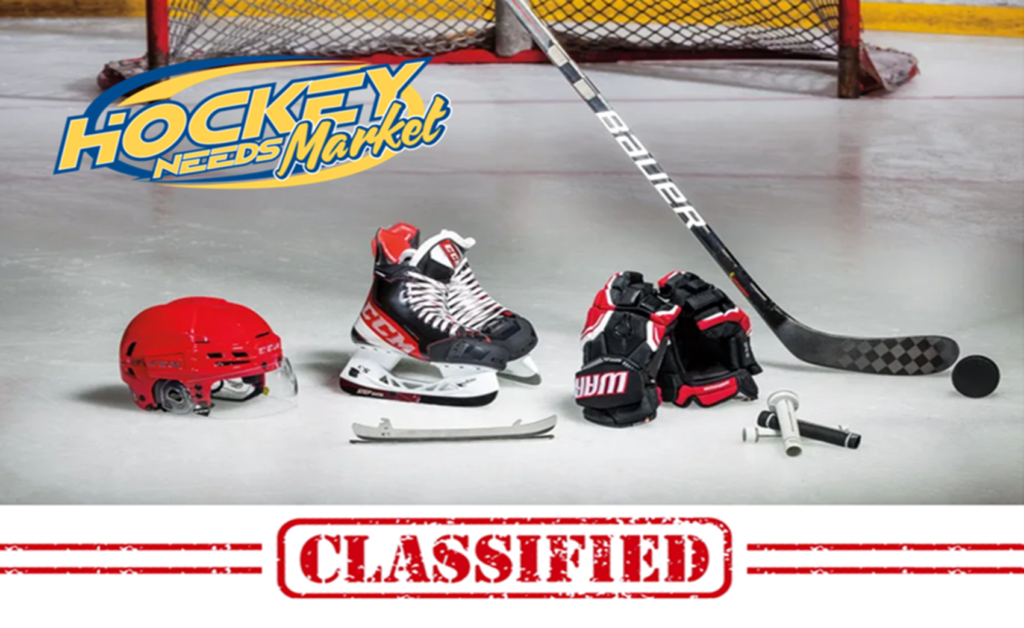Skating Treadmill: Is It Worth It?

Hockey is a sport that is enjoyed by people of all ages. It is a fast-paced and exciting activity that can be played on any type of surface. However, hockey is a sport that is often played on ice. This means that players need to have access to an ice rink to play and train. An ice rink can be an expensive investment, and not everyone has the space or the resources to build one. This is where a Skating Treadmill comes into play.
As the winter hockey season fast approaches, lots of young hockey players look for ways to keep fit, work on their hockey technique, and improve their skating stride during the summer break. One of the new and controversial ways of training is using a Skating Treadmill. Why do I say controversial? There are people out there who claim Treadmills work, lots of benefits or don’t work, waste of money. The Question – Skating Treadmills Is It Worth It?
What Is A Skating Treadmill?
A Skating Treadmill is a device that helps skaters practice their skating without having to go to an ice rink. It consists of a moving belt that the skater stands on, and they can mainly skate forward. The speed of the belt can be adjusted, and there is usually a handlebar to help the skater balance.
Cost Of A Skating Treadmill
This type of machine can be an excellent investment for those who want to play hockey but do not have access to an ice rink. So, how much does a Skating Treadmill cost? The price of a Skating Treadmill can vary depending on the brand, the size, and the features. However, you can expect to pay anywhere from (new) $28,000 to $32,000 CAD for a quality machine. Rest assured that there are numerous skating treadmill labs located worldwide that offer training sessions, thereby avoiding the need to purchase a treadmill and locate a suitable location within your home.
The Mechanics Of A Hockey Treadmill
A Skating Treadmill is a powerful tool and an effective to help train off-ice for hockey. It can help players build speed, endurance, and strength. The Treadmill can also be used to improve your agility and quickness.
Most Treadmill has a powerful motor that can travel up to 32 kilometres per hour and is controlled remotely via a remote control. The Treadmill also includes a height-adjustable rod and three harnesses that help the players balance well and avoid falling off while skating to keep them safe.
Skating On Ice vs. On Treadmill
The primary distinction between skating on ice and skating on a Treadmill is that all hockey rinks are flat, whereas many Treadmill surfaces have a higher coefficient of friction than ice, so skating on them requires more effort because the plastic is not as slippery as ice. To be successful in hockey, you must train as closely as possible to the way the game will be played. Therefore, players should use a Treadmill that is flat or uphill instead of one that is steep to get better skating results.
Skating Treadmill Training
The primary purpose of Treadmill training is to improve both skating abilities and endurance. You can train your muscles with a variety of drills, including sprints at high speeds, tilt the Treadmill for extra hard work, and even adding some weight.
Benefits Of Skating Treadmills
Perfect Your Stride, Improve Your Speed, Balance Cardio
Treadmills are an off-ice surface to supplement a player’s fitness regimen that is intended to help them reach their full potential. As a result, players can work out on the Treadmill exercises that they would not be able to do on ice. This exercise is an excellent way to add variety to players’ off-ice workouts.
There are numerous advantages of skating on a Treadmill. The most obvious one is the ability to improve players’ forward skating stride. The capacity to perform this task on a skating Treadmill can be improved if the players perform it frequently enough. Treadmills can also help players achieve a significant amount of medium and high-speed repetitions. Furthermore, using a Treadmill can increase consistency in the new movement pattern along with your cardio stamina.
A Treadmill is an excellent tool for hockey players to fine-tune their forward skating stride while also practicing medium and high-speed repetitions. Again, to reinforce the new movement pattern. The Treadmill teaches players how to use the same physical techniques, muscle motion, and skill sets as if they were on ice.
The Treadmill can improve the player’s speed, balance, and acceleration. Players learn to apply power more efficiently with the Treadmill by practicing the same physical technique and muscle motion as on-ice skating, which will increase their acceleration. The Treadmill can also increase the strength of key lower-body muscle groups. Lower body muscle groups: hamstrings, glutes, hip flexors, and quad muscles. As mentioned previously, players who want to add a little variety to their workout regimen can apply weights with this type of training.
The Con Of Using A Skating Treadmill
Restriction Of Certain Movements
The Skating Treadmill is a tool, with specific uses. If you’re considering paying to use a skating treadmill, the following movements you are not able to perform:
Using both your inside and outside edges moving forward and backward
Quickly change directions while skating forward and backward
Quickly pivot between forward and backward skating.
Again, the Skating Treadmill is an excellent tool to help hockey players with their forward skating stride and to get a ton of medium and high-speed repetitions in to reinforce those movement patterns. Unfortunately, most players just throw themselves on the treadmill and don’t get coached on the quality of the movement.
Another point to keep in mind – Be cautious, Skating Treadmill does not force you to skate properly. It might relieve you of gross errors in your skating stride. But, for the most part, it reinforces whatever problems you have with your stride. The second thing is even if you do have a good stride, the treadmill cannot help you with the final push of your stride which utilizes the inside edge of the skate ”toe” blade. You simply are not able to scrunch up your toes in your boot and dig the inside tip of your blade into the surface of the treadmill like you can on the ice.
Are Skating Treadmills Worth It?
In Conclusion
With all the debates surrounding or pros and cons of using a skating Treadmill, one thing is certain, if you want to improve your skating technique – it is best to use a Treadmill under the supervision of a skating coach in conjunction with an on-ice program that focuses on skating technique. Also, decide if you want to use it to improve your technique, endurance, or both. If you are looking for a way to build cardio stamina and muscle strength specific to skating, then the treadmill can be a good option for those who simply like to exercise on the treadmill or those who would benefit from committing to a regularly scheduled exercise regimen. More convenient and less expensive at-home exercise programs that achieve the same physical benefits can’t equal or beat using the treadmill unless one has the discipline to do them. Ultimately, it comes down to personal preference and what you are looking to get out of using a Skating Treadmill.
MORE FROM HOCKEYNEEDS THE PLUG:
Related Article – Simple Core Exercises For Minor Hockey Players – With Exercise Videos
Please visit our hockey Classifieds site – HockeyNeeds Market
We hope you enjoyed this article! If you would like to submit your hockey story to be published on this site, we will definitely be interested and proud to display it. It could be anything from how your team did in a tournament, to an exceptional game your team played or an individual had. Please email your story and pictures to yourstory@hockeyneeds.com



